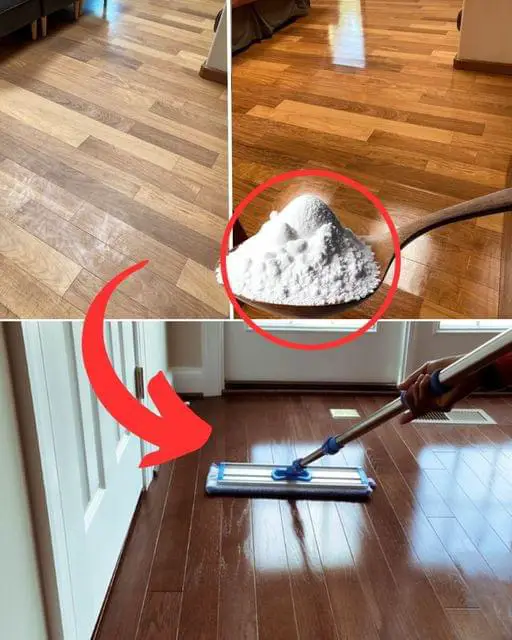When it comes to maintaining spotless and shiny floors, many people assume that harsh chemicals are the only solution. However, a growing number of cleaning companies are turning to natural ingredients to achieve the same results without the environmental and health risks associated with chemical cleaners. This approach not only helps protect the planet but also provides a safer environment for your family and pets.
Why Natural Ingredients?
Natural cleaning ingredients like vinegar, lemon juice, and baking soda have been trusted for generations. They are powerful enough to tackle dirt and grime yet gentle on surfaces. Here’s why these ingredients are becoming the go-to choice for both professional cleaners and eco-conscious homeowners:
- Eco-Friendly: Unlike chemical cleaners, natural ingredients don’t release harmful toxins into the environment. They break down easily and don’t contribute to air and water pollution.
- Cost-Effective: Natural cleaners are often more affordable than their chemical counterparts. Items like vinegar and baking soda are inexpensive and versatile, reducing the need for multiple specialized cleaning products.
- Healthier Home Environment: Chemical cleaners can leave behind residues that may be harmful if ingested or inhaled, especially by children and pets. Natural cleaners are free from toxic chemicals, making them safer for daily use.
The Power of Vinegar, Lemon Juice, and Baking Soda
Let’s take a closer look at how these natural ingredients work their magic:
- Vinegar: This acidic liquid is excellent for cutting through grease and grime. It also acts as a natural disinfectant, killing many types of bacteria and mold. For floor cleaning, mixing vinegar with water creates a powerful solution that can remove dirt and leave floors sparkling.
- Lemon Juice: The citric acid in lemon juice is effective at breaking down stains and leaving surfaces with a fresh, clean scent. It’s particularly useful for treating spots and can also help neutralize odors.
- Baking Soda: Known for its abrasive properties, baking soda is perfect for scrubbing tough spots without scratching surfaces. It also works as a deodorizer, neutralizing bad smells while cleaning.
The Role of Microfiber Cloths
In addition to natural ingredients, microfiber cloths play a crucial role in achieving spotless floors. These cloths are made of tiny fibers that trap dirt, dust, and moisture more effectively than traditional cleaning cloths. Here’s why microfiber is a favorite among professional cleaners:
- Efficiency: Microfiber cloths can clean surfaces without the need for additional cleaning products. The fibers are designed to lift and trap dirt, which reduces the need for multiple passes over the same area.
- Eco-Friendly: Because they require less water and cleaning solution, microfiber cloths are a more sustainable option. They are also reusable and can be washed and reused hundreds of times, reducing waste.
- Gentle on Surfaces: Microfiber is soft and non-abrasive, making it safe to use on a variety of floor types, including hardwood, tile, and laminate.
Tips for Shiny, Chemical-Free Floors
- Vinegar and Water Solution: Mix one part vinegar with three parts water for an effective floor cleaner. This solution works well on most floor types, including tile and laminate.
- Lemon and Baking Soda Scrub: For stubborn spots or stains, create a paste using lemon juice and baking soda. Apply it to the affected area, let it sit for a few minutes, and then scrub with a microfiber cloth.
- Dry Mop with Microfiber: After mopping with a vinegar solution, use a dry microfiber mop to remove any remaining moisture and buff the floor to a shine.
- Routine Maintenance: Regularly sweeping or vacuuming with a microfiber cloth or mop can prevent dirt and dust from building up, reducing the need for more intensive cleaning.
- Spot Cleaning: For small spills or sticky spots, a quick wipe with a vinegar-soaked microfiber cloth is usually all it takes to clean up the mess and restore the floor’s shine.
FAQs
1. Can vinegar damage my floors?
- Vinegar is generally safe for most floors, but it’s important to dilute it properly. For hardwood floors, use a more diluted solution (1:4 vinegar to water) and avoid excessive use to prevent dulling the finish.
2. How often should I clean my floors with these natural methods?
- Regular maintenance, such as dry mopping with a microfiber cloth, can be done daily or weekly. Deeper cleaning with vinegar or lemon juice can be done bi-weekly or monthly, depending on foot traffic and dirt buildup.
3. Can I add essential oils to my cleaning solutions?
- Yes! Adding a few drops of essential oils like lavender, tea tree, or eucalyptus can enhance the cleaning power and leave your home smelling fresh.
4. Are these methods safe for all floor types?
- Most natural cleaning methods are safe for tile, laminate, and vinyl floors. However, always test a small, inconspicuous area first, especially with hardwood or stone floors, to ensure there’s no adverse reaction.
5. How do I store my natural cleaning solutions?
- Store your vinegar or lemon-based cleaning solutions in a cool, dark place in a sealed container. This will help maintain their effectiveness over time.
6. What’s the best way to clean grout between tiles?
- A paste made from baking soda and water, applied with a toothbrush or small scrub brush, is excellent for cleaning grout. Let it sit for a few minutes, scrub, and then rinse with water.
By using natural ingredients and tools like microfiber cloths, you can achieve spotless, shiny floors without the use of harmful chemicals. Not only is this approach better for your home environment, but it also supports a more sustainable lifestyle. So next time you’re cleaning, consider reaching for that bottle of vinegar or a lemon instead of a harsh chemical cleaner. Your floors, your health, and the planet will thank you!

